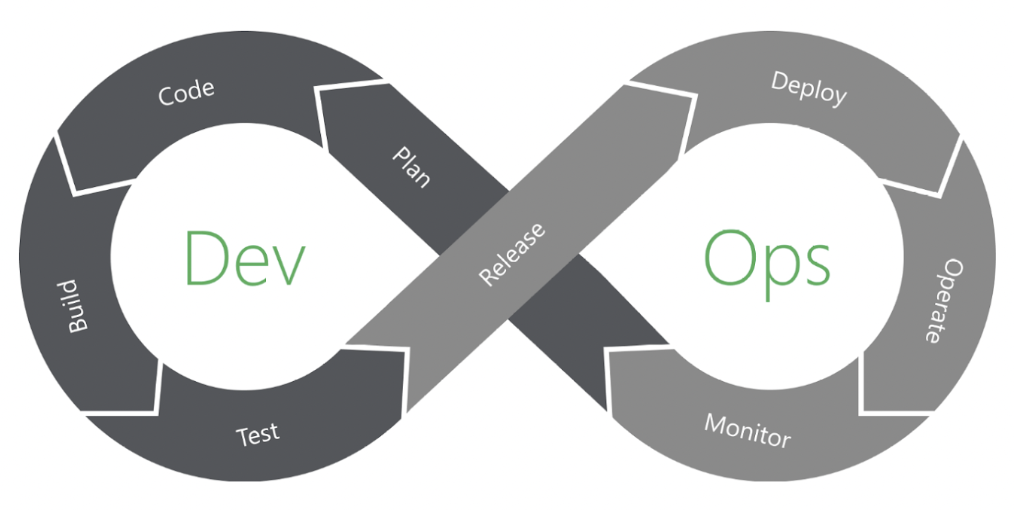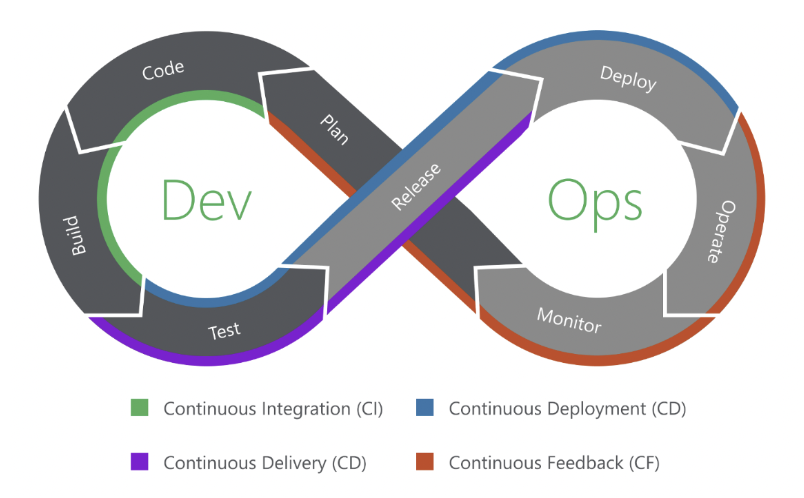January 19, 2023
DevOps and its Phases

What is DevOps?
As the name suggests, DevOps is a combination of software development and operations. Its purpose is to ensure that one team can handle the whole software development lifecycle (SDLC). The SDLC consists of coding, testing the software, application deployment, operations, and more. It encourages communication between the software development and operations teams so that code can be automatically and swiftly deployed to the production environment.
Features of DevOps
Automation
Automation reduces the time factor considerably, mainly during the testing of the software and deploying the application. Due to automation, productivity increases, and releases happen faster, which helps catch software defects or bugs sooner.
Collaboration
As discussed above, the development and operations teams collaborate and work together as a DevOps team. This collaboration helps improve the cultural model, due to which productivity increases and ownership strengthens. Team collaboration results in faster deployments.
Integration
Integration occurs by integrating the new application with the other components in the environment. Existing code needs to be merged with other functionalities and tested. Testing and integration are done concurrently so that development can happen at the same time. Microservices may indicate some operational problems. Deliveries are made in a secure, dependable, and timely way when operational concerns are resolved through simultaneous integration and delivery.
Configuration
The configuration enables the software application to interact with resources related to the environment in which the application is running. The config file code depends on the type of environment. It can be written during deployment or at run time.
Phases in DevOps

Plan
The planning stage consists of the things that happen before the software developers start with the code. Here, input from clients and stakeholders is used to gather requirements. Based on anticipated future development, a product roadmap is developed. A management tool like DevOps, Jira, or Asana can track and document this roadmap. The management assists in monitoring difficulties, project progress, and other things.
Code
After defining the product roadmap and creating the user stories, the software developers can start working. The team has some standard plugins installed in the dev environment to help in the development process. The plugins help with code consistency and allow us to avoid any security hacks.
Build
The build is where the DevOps starts. The software developer commits their code to a shared repository once they have completed a task. There are other ways to do this, but the developer often uploads a pull request. The developer submits a further request for the shared repository to include the updated code. The revised code is examined by another programmer. The pull request is authorized in the absence of any problems. This review by a different developer assists in identifying any issues. The pull request sets up an automated process for developing the codebase and including unit tests concurrently to detect any prior errors. The software developer gets alerted to fix the problem if the build or any unit test fails. Regular checking of the code in the shared repository helps to identify and fix bugs early.
Test
After building the code, it goes into the staging environment for full-form testing. The staging environment is either a new or an already existing environment as part of the deployment process. Providing a new staging environment at the time of deployment of the application is called Infrastructure As Code (IAC). IAC is an integral part of the pipeline of DevOps.
Testers perform many manual and automated tests. Automated tests carry out load testing, performance testing, and security checks against the developed application. Additionally, testers carry out user acceptance testing while acting as the application’s client. User acceptance testing helps to identify and address any issues before the deployment of the application to the production environment.
Release
Once all the tests pass, the release, or multiple releases, occur as per company needs or the timeline of the product roadmap.
Deploy
In this stage IAC can be configured to create the production environment and the built code can be released.
Operate
The release is ready to use by the client or the customer. Now the operations team takes charge and makes sure everything is running smoothly.
Monitor
Monitoring is the last phase of the cycle. Monitoring criteria use customer feedback and the performance of the application.

The core of DevOps is continuous everything. Let’s start with it.
Continuous Integration
Code alignment and the creation of a DevOps pipeline are accomplished by continuous integration. While doing automated unit testing, it integrates all software developers’ code into the central code repository. The merge process regularly involves small pieces of code to ensure that the intensity or issues and bugs are small and manageable. Regularly merging code also improves productivity.
Continuous Delivery
Continuous delivery automates the process of the new build code into the production environment, configures the deployment environments, and tests these environments for security purposes, performance, and stability.
Continuous Deployment
Continuous deployment is like continuous delivery. Continuous deployment differs from continuous delivery because there is no manual approval of new releases. Code that passes all checks deploys into production automatically.
Continuous Feedback
The main part of DevOps is to have new features as soon as feedback from the customer or clients comes in. Continuous feedback takes data from the operation and monitor phases and looks at the plan to modify the product.